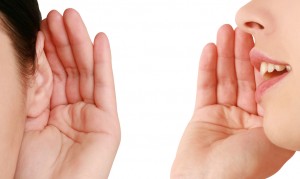
Providing your customers with consistently great service — experiences that encourage them to evangelize your brand — increases what McKinsey calls “word-of-mouth equity,” a window into a brand’s power to generate messages that influence the consumer’s decision to purchase. A McKinsey Quarterly article reported:
Word of mouth plays a key role in the consumer decision-making process. It’s also the most disruptive element. Word of mouth can lead a consumer to think about a brand or product in a way that extra advertising money just can’t achieve. It’s not just a one-time effect either. The right messages connect and spread within engaged networks, influencing brand views, buying rates, and market share. The growth of online communities and communication has greatly boosted the chances for strong and widespread momentum effects.
Focusing on providing great customer experiences can motivate your customers to promote your brand, helping to lower costs and boost conversions. Today’s tech-savvy consumers share their positive customer service experiences on various platforms—social media, blogs, email, and in talks with friends and family. In popular one-to-many channels like blogs and social networks, a good recommendation can lead to significant results. The same goes for a bad review.
As consumer review sites are increasingly unreliable (even with action being taken against those manipulating online customer reviews), a personal recommendation from friend or family member for a trusted site to buy a new pair of winter boots, or a hotel for your upcoming trip to the Bahamas, carries more weight than most forms of traditional advertising. In addition, word-of-mouth can also drive repeat purchases.
Here are six reasons why customer service, good and bad, is so important when it comes to word-of-mouth marketing*:
-
A dissatisfied customer will tell between 9-15 people about their experience.
-
Around 13% of dissatisfied customers tell more than 20 people.
-
Negative interactions with a business are spread to twice as many people as positive ones.
-
People are twice as likely to talk about bad customer service experiences than they are to talk about good experiences.
-
67% of people spend money after getting recommendations from their friends on online communities like Facebook and Twitter.
-
Happy customers who get their issue resolved tell about 4-6 people about their experience.
Customer experience isn’t just something that impacts the perception of your brand in the marketplace. It is your brand. So what are you doing to deliver exceptional experiences to your customers?
*Source for word-of-mouth statistics: White House Office of Consumer Affairs, 2012 Global Customer Service Barometer, McKinsey Quarterly, Internet Retailer.
This article originally appeared on Happy Customer.